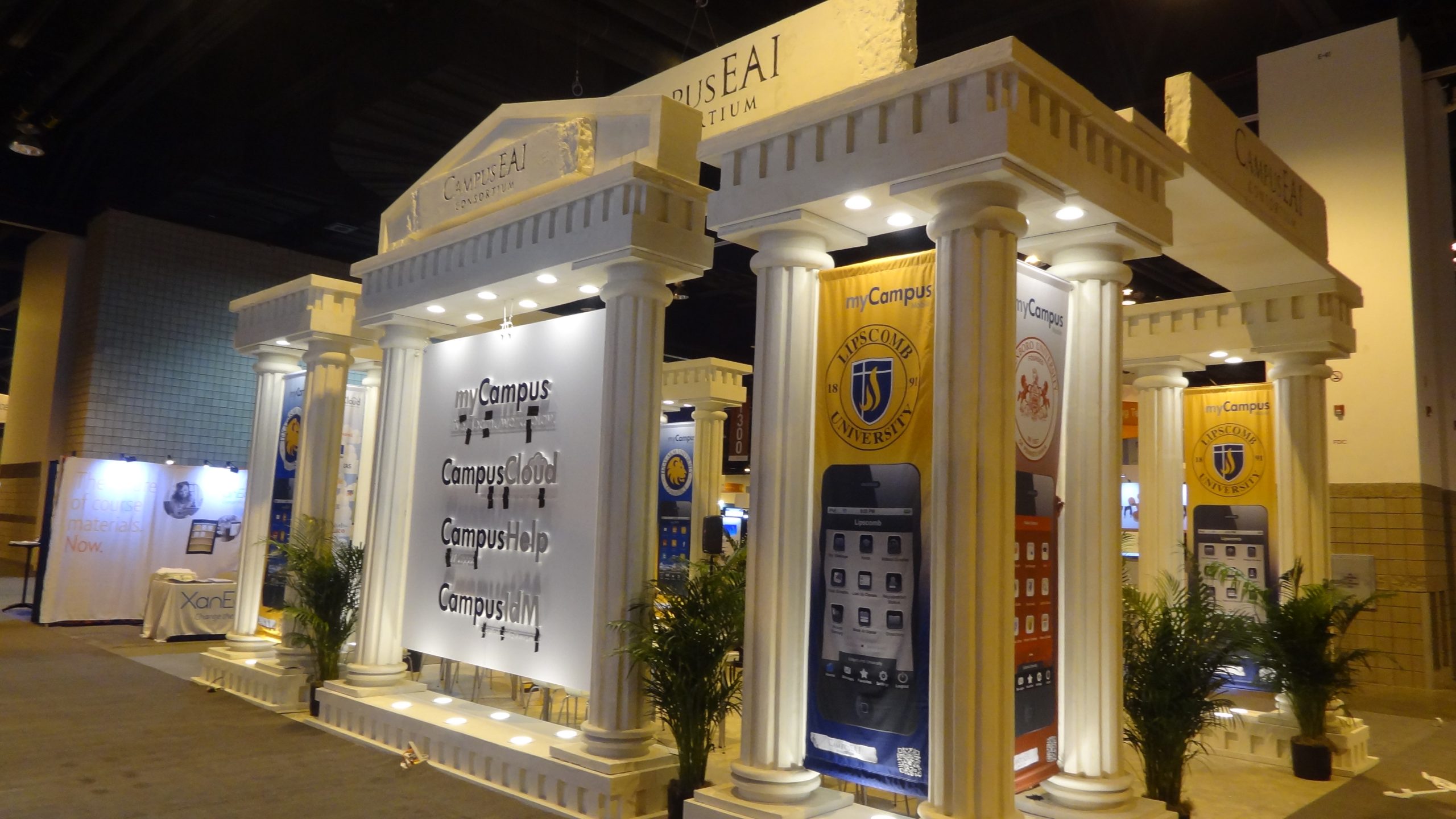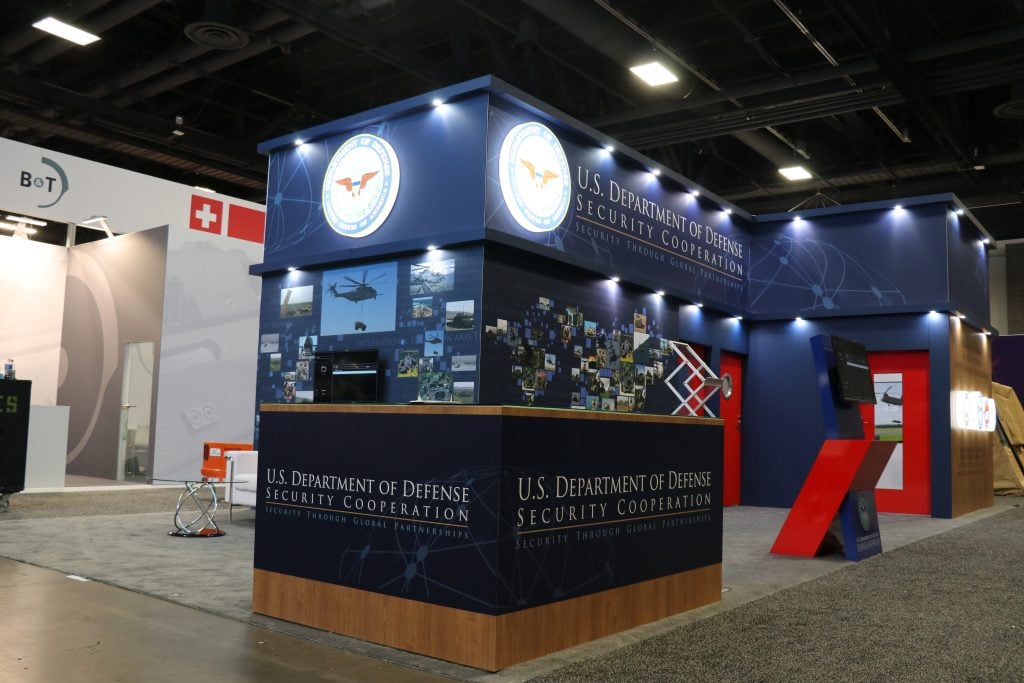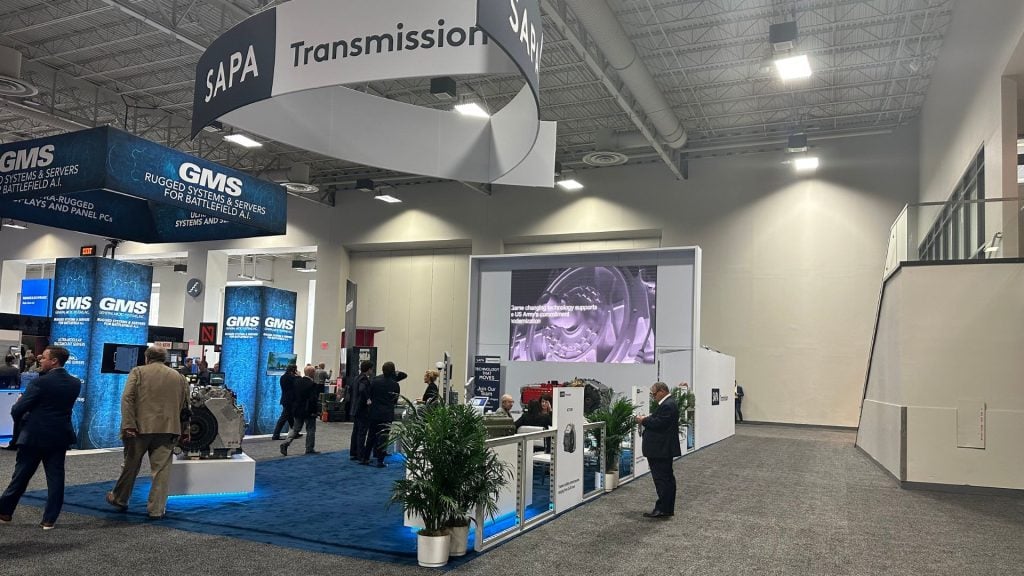
Introduction
The world of trade show exhibits is continuously evolving, driven by technological advancements and shifting attendee expectations. Amid these changes, a renewed interest in classic design principles is emerging, blending the best of traditional aesthetics with modern innovation.
This “Exhibit Renaissance” focuses on reviving timeless design principles to create exhibits that are not only visually stunning but also highly effective. In this blog, we explore how classic design principles can be adapted to enhance modern exhibits, ensuring they stand out in a competitive landscape.
1. The Timeless Appeal of Classic Design:
Classic design principles, rooted in simplicity, balance, and elegance, have stood the test of time for a reason. They create exhibits that are both aesthetically pleasing and functionally effective.
- Simplicity: One of the core tenets of classic design is simplicity. By avoiding clutter and focusing on essential elements, exhibits can deliver clear and compelling messages that resonate with attendees.
- Balance: Balanced layouts create a harmonious and pleasing visual experience. This involves the strategic placement of elements to ensure that the exhibit feels stable and well-organized.
- Elegance: Elegance in design often comes from attention to detail and high-quality materials. Exhibits that incorporate these elements exude professionalism and sophistication, enhancing brand perception.
2. Reviving Classic Design in Modern Exhibits:
Incorporating classic design principles into modern exhibits involves blending traditional aesthetics with contemporary innovations. Here’s how to do it effectively:
- Minimalist Layouts: Embrace minimalist design by focusing on key messages and decluttering the exhibit space. Use clean lines, open spaces, and a limited color palette to create a sophisticated and focused presentation.
- Symmetry and Asymmetry: Use symmetry to create a sense of order and stability. Alternatively, intentional asymmetry can add dynamic interest while maintaining balance. Both approaches can be used to guide the viewer’s eye and highlight important elements.
- Quality Materials: Invest in high-quality materials such as wood, glass, and metal. These materials not only provide a premium feel but also contribute to the durability and sustainability of the exhibit.
- Timeless Typography: Choose classic typefaces that are easy to read and convey professionalism. Consistent typography helps reinforce brand identity and ensures clarity in communication.
3. Integrating Modern Technology with Classic Design:
While classic design principles provide a strong foundation, integrating modern technology can enhance the functionality and interactivity of exhibits.
- Digital Displays: Use digital displays to present dynamic content such as videos, animations, and interactive elements. These can be seamlessly integrated into a classic design framework to provide a modern touch.
- Augmented Reality (AR): Incorporate AR to create immersive experiences that blend physical and digital elements. AR can bring static displays to life, providing deeper engagement and interactivity.
- Interactive Touchpoints: Use interactive touchpoints such as touchscreen kiosks and tablets to allow attendees to explore content at their own pace. These can be designed to complement the overall aesthetic of the exhibit.
4. Designing for Engagement and Experience:
Classic design principles are not only about aesthetics but also about creating meaningful and engaging experiences for attendees.
- Storytelling: Use classic design to support storytelling. Create a narrative flow within the exhibit that guides attendees through your brand’s story, values, and offerings in a coherent and engaging manner.
- Comfort and Accessibility: Ensure the exhibit design is comfortable and accessible. Incorporate seating areas, clear signage, and easy navigation to enhance the attendee experience.
- Human Touch: Incorporate elements that add a personal touch, such as live demonstrations, knowledgeable staff, and interactive workshops. These elements can make the exhibit more engaging and memorable.
5. Future-Proofing with Classic Principles:
While trends come and go, classic design principles are timeless. By incorporating these principles, exhibits can remain relevant and impactful over the long term.
- Sustainability: Classic design often emphasizes quality and durability, aligning with sustainable practices. Investing in reusable, high-quality materials reduces waste and supports environmental goals.
- Adaptability: A well-designed exhibit based on classic principles can be easily adapted for different events and spaces. This flexibility ensures that the exhibit remains effective in various contexts.
- Enduring Appeal: Classic design principles have a broad appeal that transcends trends and demographics. This makes them suitable for a wide range of audiences and ensures lasting impact.
Conclusion:
The Exhibit Renaissance is a movement that blends the best of classic design principles with modern innovations, creating exhibits that are both beautiful and functional. By embracing simplicity, balance, and elegance, and integrating contemporary technology, exhibitors can craft spaces that engage, inspire, and leave a lasting impression. As we look to the future, the timeless appeal of classic design will continue to provide a strong foundation for creating impactful trade show exhibits.


 Global
Global Europe
Europe

